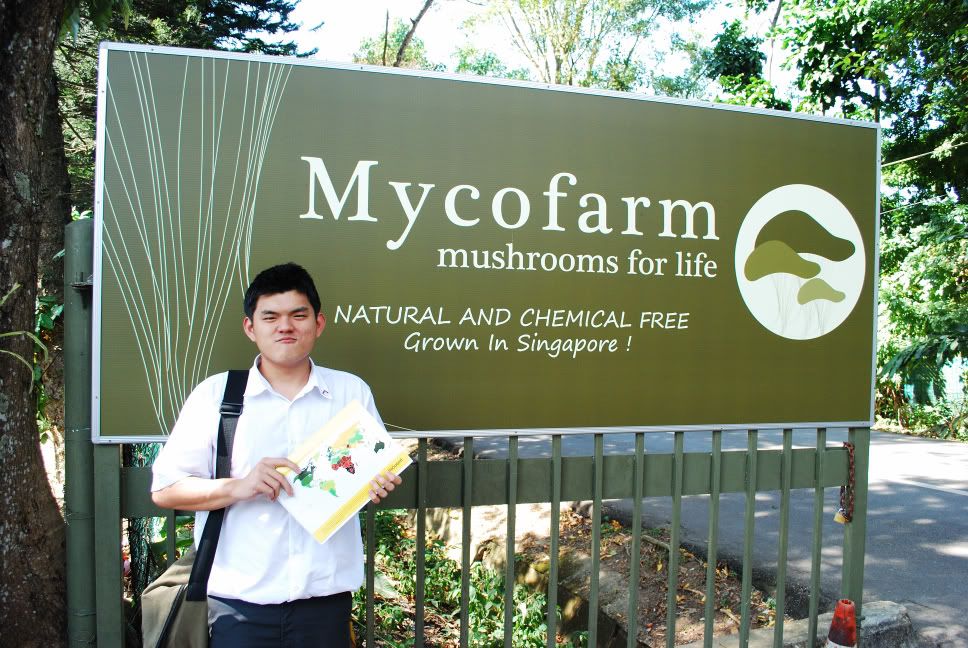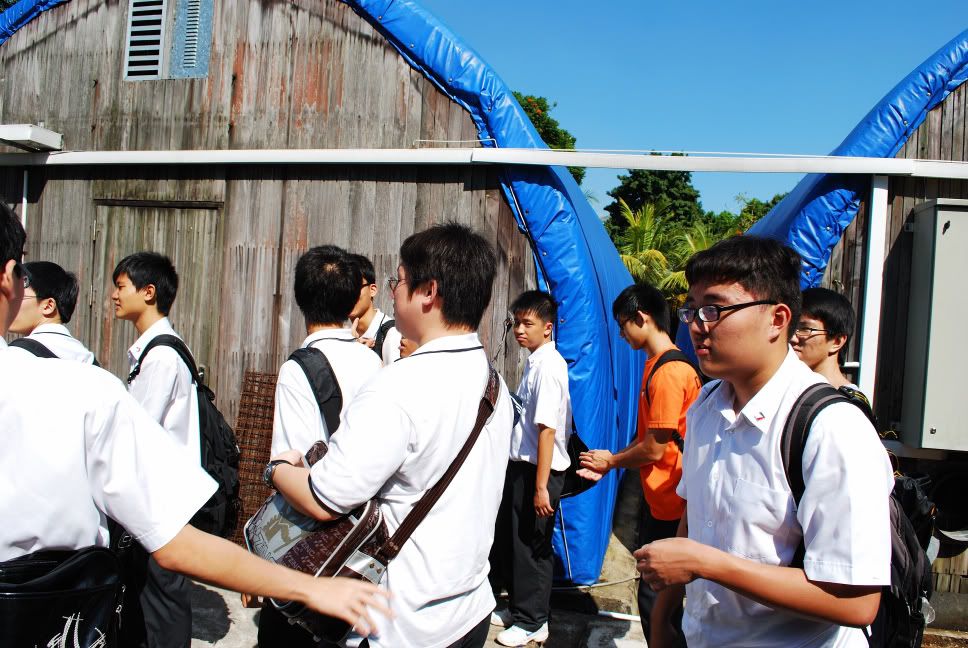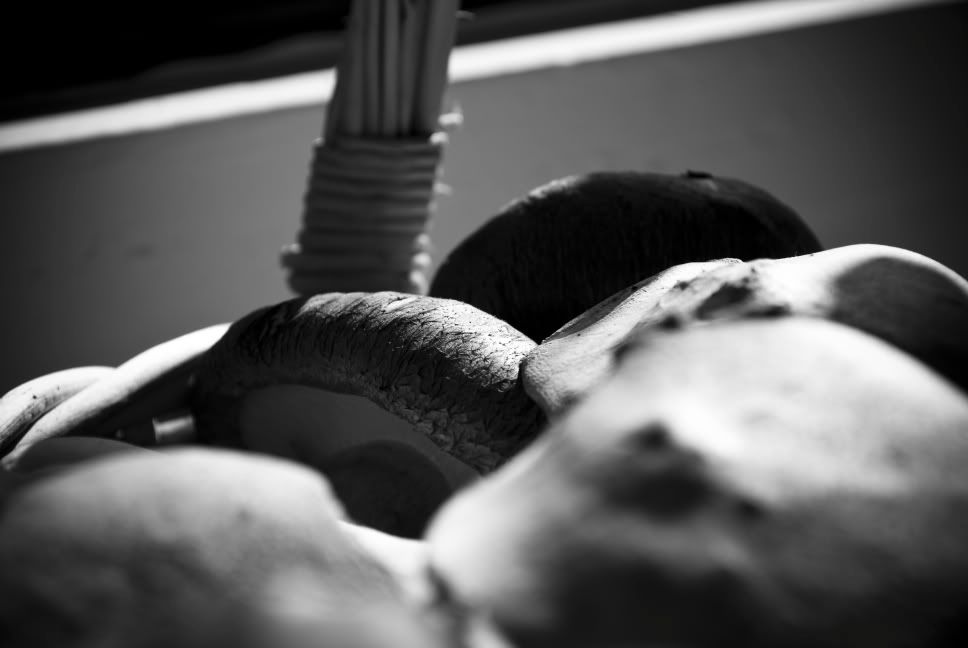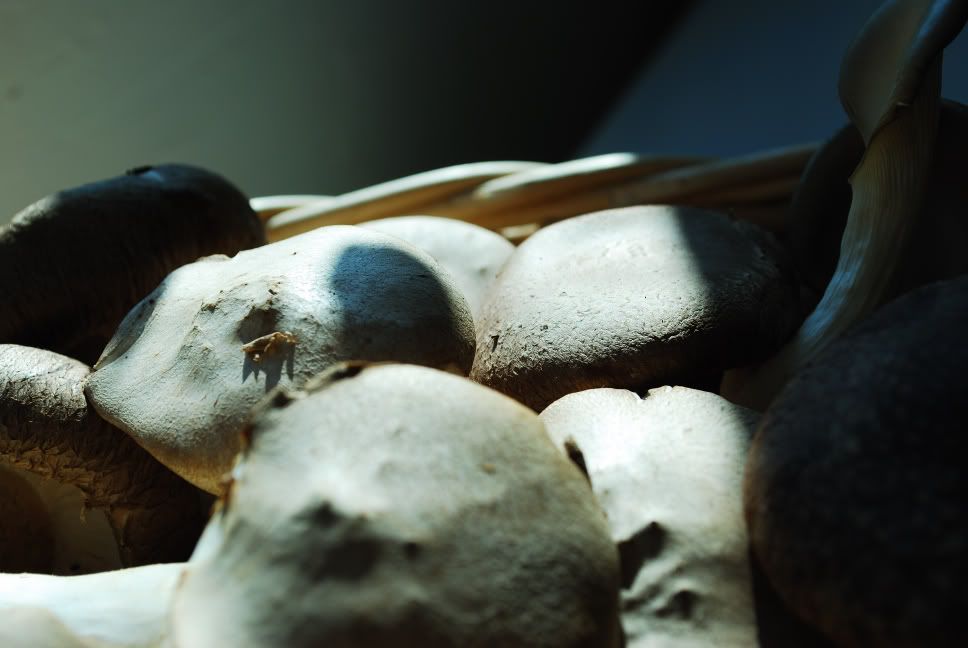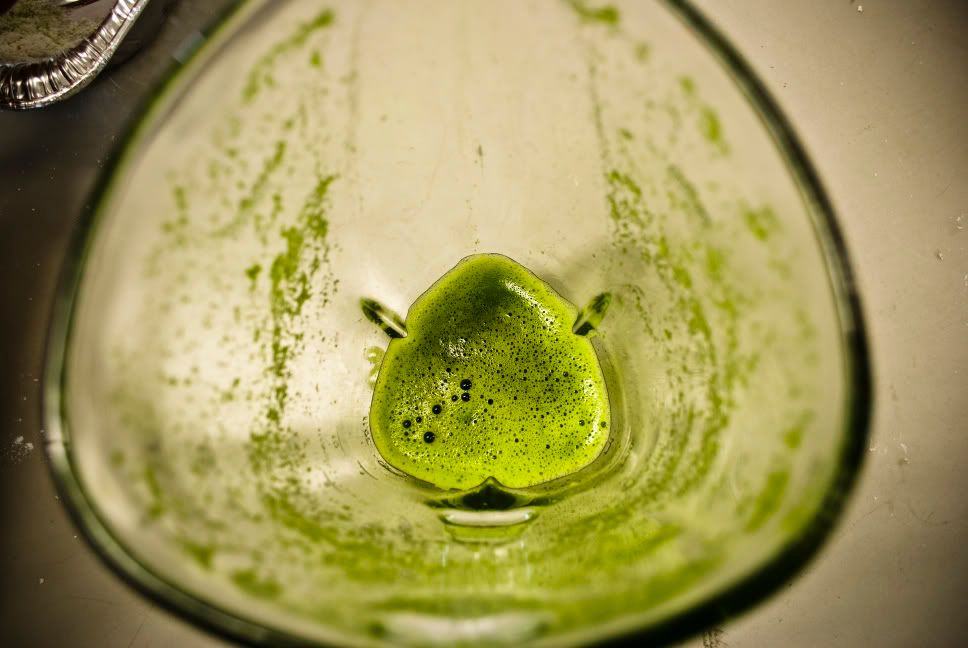Thursday, April 2, 2009
Monday, February 9, 2009
Tang Yuan Making Report on the 14 Jan 2009
Tang Yuan Making
Done by: Hong Wanxiu, Chan Jia Min, Lim Yu Jun
Date: 14 January 2009
Time: 3.30pm-5pm
Venue: Biology Lab

Objectives:
(1) To promote the use of natural colourings
(2) Bonding session for members
Origin of tang yuan
Tang Yuan is a dish of glutinous rice balls served in a aweet broth. In Chinese culture, it is traditionally served on Dong Zhi, the winter solstice. By eating Tang Yuan, you welcome in the winter and become one year older.
Tang Yuan makes a delicious winter snack and is easy to prepare. Despite its association with mid-winter, it can be enjoyed at any time of year.
Recipe
Ingredients for Tang Yuan:
4 packet x 500g glutinous rice flour
Warm water
Fine Sugar (for peanut filling)
Crushed Peanuts (filling)
Red Bean Mix (filling)
Syrup:
900ml water
225g sugar
4 screwpine leaves, shredded and knotted
3 tbsp sago, soaked
300ml thick coconut milk
¾-1 tsp salt
Natural Colours Used:
Blue Pea Flower Petals (for natural blue colour)
Pandan Leaf (for natural green colour and soup flavouring)
Orange Sweet Potato (for natural orange colour)
Purple Sweet Potato (for natural purple colour)
Preparation:
(1)
Pour the glutinous rice flour in a bowl and slowly add warm water until the mixture becomes the texture of plasticine. Knead it for about 5 minutes. You can add the natural food colouring to the dough.


(2)
Blue Colour: Put the blue pea flower petals into a bowl and add some water. Press the petals. Now, remove the petals then pour the liquid into the dough to get blue dough.



Done by: Hong Wanxiu, Chan Jia Min, Lim Yu Jun
Date: 14 January 2009
Time: 3.30pm-5pm
Venue: Biology Lab

Objectives:
(1) To promote the use of natural colourings
(2) Bonding session for members
Origin of tang yuan
Tang Yuan is a dish of glutinous rice balls served in a aweet broth. In Chinese culture, it is traditionally served on Dong Zhi, the winter solstice. By eating Tang Yuan, you welcome in the winter and become one year older.
Tang Yuan makes a delicious winter snack and is easy to prepare. Despite its association with mid-winter, it can be enjoyed at any time of year.
Recipe
Ingredients for Tang Yuan:
4 packet x 500g glutinous rice flour
Warm water
Fine Sugar (for peanut filling)
Crushed Peanuts (filling)
Red Bean Mix (filling)
Syrup:
900ml water
225g sugar
4 screwpine leaves, shredded and knotted
3 tbsp sago, soaked
300ml thick coconut milk
¾-1 tsp salt
Natural Colours Used:
Blue Pea Flower Petals (for natural blue colour)
Pandan Leaf (for natural green colour and soup flavouring)
Orange Sweet Potato (for natural orange colour)
Purple Sweet Potato (for natural purple colour)
Preparation:
(1)
Pour the glutinous rice flour in a bowl and slowly add warm water until the mixture becomes the texture of plasticine. Knead it for about 5 minutes. You can add the natural food colouring to the dough.


(2)
Blue Colour: Put the blue pea flower petals into a bowl and add some water. Press the petals. Now, remove the petals then pour the liquid into the dough to get blue dough.
(3)
Green Colour: Put some pandan leaves and water into a blender and blend. Let the mixture sit, and then pour the liquid into the dough to get green dough.
Green Colour: Put some pandan leaves and water into a blender and blend. Let the mixture sit, and then pour the liquid into the dough to get green dough.
(4)
Orange Colour: Boil the orange sweet potato. Peel the sweet potato skin then mash it and knead the sweet potato into the orange coloured dough with a little warm water.
(5)
Purple Colour: Boil the purple sweet potato. Peel the sweet potato skin then mash it and knead the sweet potato into the purple coloured dough with a little warm water.
(6)
Without Filling: Pinch off pieces of the dough and roll each into a small ball.(6)Without Filling: Pinch off pieces of the dough and roll each into a small ball.



(7)
With Filling: Pinch off pieces of the dough and roll each piece into small ball. Next, flatten each ball into a circle. Then add the filling in the middle of the dough. Seal the filling with parts of the dough and then roll it into a spherical shape.
(8)
Put the ready-to-cook tang yuans onto a plate which is coated with flour to prevent the tang yuans from sticking to each other and the bottom of the plate.

(9)
Drop the balls into boiling water and cook them until they float. The process takes about 5 to 10 minutes.
Drop the balls into boiling water and cook them until they float. The process takes about 5 to 10 minutes.
(10)
While waiting for the tang yuans to be cooked, prepare the syrup. Bring water, sugar and screwpine leaves to a boil. Add sago and cook until the sago becomes transparent. Add coconut milk and salt.
While waiting for the tang yuans to be cooked, prepare the syrup. Bring water, sugar and screwpine leaves to a boil. Add sago and cook until the sago becomes transparent. Add coconut milk and salt.

Summary
We began our activity by bringing the ingredients to the Biology Lab. We started boiling the water. In addition, we started kneading the dough for the Tang Yuan. After the dough was prepared, our members started to make their own Tang Yuan. Next, we added different natural colours to the dough that are made into Tang Yuan.
However, the hot plate could not bring the water to boil. In the end, our members had to bring home the Tang Yuan that they made so as to cook them.
However, the hot plate could not bring the water to boil. In the end, our members had to bring home the Tang Yuan that they made so as to cook them.
Due to our inexperience, there were some unexpected errors made, resulting in none of the tang yuan cooked. Here are the problems that we had faced and some alternatives to the problems are as follow:
Problems: The pot of water could not boil with the use of hotplate from the chemistry lab.
Alternatives: Use an electric rice cooker instead.
Alternatives: Use an electric rice cooker instead.
Problems: We exceeded the one and a half hours time limit that was planned to make the tang yuan.
Alternatives: Instead of making tang yuan, we could make Ang Ku Kueh instead, as it is easier to make and the preparation time is shorter.
Alternatives: Instead of making tang yuan, we could make Ang Ku Kueh instead, as it is easier to make and the preparation time is shorter.
Problems: We were quite disorganized as we did not plan who to do what beforehand, and as a result some did more work than the others.
Alternatives: We have to assign the tasks beforehand to speed up the preparation process and all will do the same amount of work.
Alternatives: We have to assign the tasks beforehand to speed up the preparation process and all will do the same amount of work.
Reflections
I feel that the tang yuan making session has helped many of our members break down barriers and many members had the chance to get to know and talk to other members. From the session, members are able to apply this experience to make tang yuan at their own homes. Apart from that, we have learnt that when making coloured tang yuan, it is not necessary to add artificial food colouring. Many colours that the supermarket stocks can actually be found as natural colouring from plants, such as blue colour is from blue pea flower, green colour from pandan leaves, purple and green colour from sweet potatoes. All in all, I have gained much knowledge from this memorable experience.
-Wanxiu
I enjoyed the tang yuan making session as it taught me the different types of natural colourings that are available besides artificial colouring. Since I was in charge of doing the report for this tang yuan making session, I did research on the history of tang yuan. I found out that tang yuan is eaten during dong zhi. I really enjoy this unique piece of Chinese culture.
-Yu Jun
The tang yuan making session was a fun and enjoyable activity where our members had the opportunity to know each other better. It was also very interesting for us to use natural ingredients when adding colour to the tang yuan. It was an eye opener for me as I did not know that the colours that we obtained from the natural ingredients were of the same shade which we can get from artificial food colourings.
-Jia Min
The tang yuan making session activity on the 14th January 2009 was to encourage bonding among the club members and to introduce the concept of using natural food colouring. On the whole, the activity itself was very exciting and I had an enjoyable time learning how to extract food colour from different plants and leaves. This bonding session for the club has greatly helped to improve the rapport between members and forge stronger friendships. In addition to bringing the club members closer together, this activity also serves as an educational lesson on what nature can provide. The school’s herb garden provided the essential ingredients for the activity. The blue pea flower provided the blue food colouring while pandan leaves and sweet potatoes provided the green, purple and orange food colours. The use of natural food colouring as opposed to artificial food colouring is in line with our club’s aim to learn about natural resources around us and how we can use it in our everyday lives. In all, this activity has truly been an eye-opener for me and it was a great way for all of us to start and make lasting friendships in the New Year.
-Caroline
I feel that the tang yuan making session has helped many of our members break down barriers and many members had the chance to get to know and talk to other members. From the session, members are able to apply this experience to make tang yuan at their own homes. Apart from that, we have learnt that when making coloured tang yuan, it is not necessary to add artificial food colouring. Many colours that the supermarket stocks can actually be found as natural colouring from plants, such as blue colour is from blue pea flower, green colour from pandan leaves, purple and green colour from sweet potatoes. All in all, I have gained much knowledge from this memorable experience.
-Wanxiu
I enjoyed the tang yuan making session as it taught me the different types of natural colourings that are available besides artificial colouring. Since I was in charge of doing the report for this tang yuan making session, I did research on the history of tang yuan. I found out that tang yuan is eaten during dong zhi. I really enjoy this unique piece of Chinese culture.
-Yu Jun
The tang yuan making session was a fun and enjoyable activity where our members had the opportunity to know each other better. It was also very interesting for us to use natural ingredients when adding colour to the tang yuan. It was an eye opener for me as I did not know that the colours that we obtained from the natural ingredients were of the same shade which we can get from artificial food colourings.
-Jia Min
The tang yuan making session activity on the 14th January 2009 was to encourage bonding among the club members and to introduce the concept of using natural food colouring. On the whole, the activity itself was very exciting and I had an enjoyable time learning how to extract food colour from different plants and leaves. This bonding session for the club has greatly helped to improve the rapport between members and forge stronger friendships. In addition to bringing the club members closer together, this activity also serves as an educational lesson on what nature can provide. The school’s herb garden provided the essential ingredients for the activity. The blue pea flower provided the blue food colouring while pandan leaves and sweet potatoes provided the green, purple and orange food colours. The use of natural food colouring as opposed to artificial food colouring is in line with our club’s aim to learn about natural resources around us and how we can use it in our everyday lives. In all, this activity has truly been an eye-opener for me and it was a great way for all of us to start and make lasting friendships in the New Year.
-Caroline
Friday, January 23, 2009
Mushroom Farm Trip Pictures
Wednesday, January 14, 2009
Wednesday, January 7, 2009
PJC open House 2009 *cont*
Postings on www.ecoclubpjc.blogspot.com
To all, if you need posting permissions, please email your name to
My email: ultimately.joseph@gmail.com
Joseph
My email: ultimately.joseph@gmail.com
Joseph
PJC open house 2009
Finally, our preparations for the open house is completed.
We were glad that our booth was acceptable and the teachers were pretty impressed.
Thank you all for your hard work, especially Caroline's group, they worked very hard to do up the notice boards.
Joseph
We were glad that our booth was acceptable and the teachers were pretty impressed.
Thank you all for your hard work, especially Caroline's group, they worked very hard to do up the notice boards.
Joseph
Subscribe to:
Posts (Atom)












